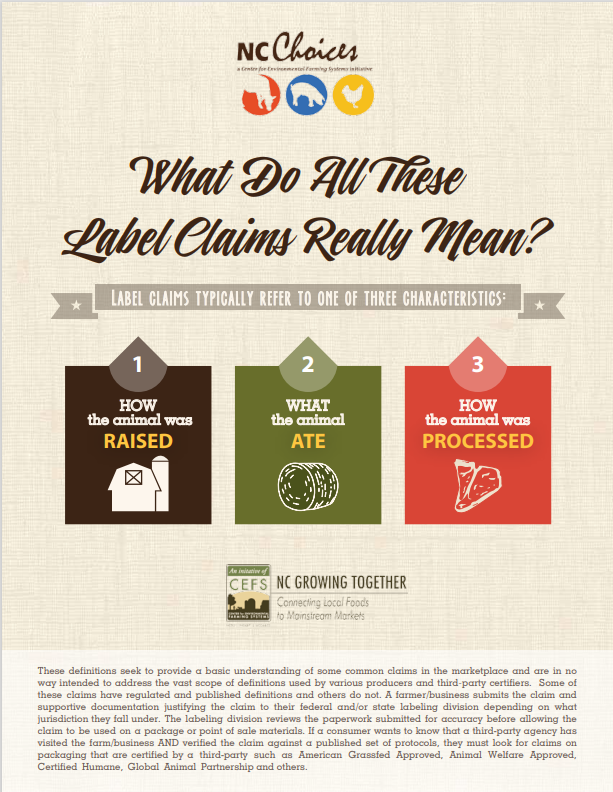Label Misconceptions Consumers Face
go.ncsu.edu/readext?907886
en Español / em Português
El inglés es el idioma de control de esta página. En la medida en que haya algún conflicto entre la traducción al inglés y la traducción, el inglés prevalece.
Al hacer clic en el enlace de traducción se activa un servicio de traducción gratuito para convertir la página al español. Al igual que con cualquier traducción por Internet, la conversión no es sensible al contexto y puede que no traduzca el texto en su significado original. NC State Extension no garantiza la exactitud del texto traducido. Por favor, tenga en cuenta que algunas aplicaciones y/o servicios pueden no funcionar como se espera cuando se traducen.
Português
Inglês é o idioma de controle desta página. Na medida que haja algum conflito entre o texto original em Inglês e a tradução, o Inglês prevalece.
Ao clicar no link de tradução, um serviço gratuito de tradução será ativado para converter a página para o Português. Como em qualquer tradução pela internet, a conversão não é sensivel ao contexto e pode não ocorrer a tradução para o significado orginal. O serviço de Extensão da Carolina do Norte (NC State Extension) não garante a exatidão do texto traduzido. Por favor, observe que algumas funções ou serviços podem não funcionar como esperado após a tradução.
English
English is the controlling language of this page. To the extent there is any conflict between the English text and the translation, English controls.
Clicking on the translation link activates a free translation service to convert the page to Spanish. As with any Internet translation, the conversion is not context-sensitive and may not translate the text to its original meaning. NC State Extension does not guarantee the accuracy of the translated text. Please note that some applications and/or services may not function as expected when translated.
Collapse ▲
NC Choices “What Do All These Label Claims Really Mean?”
Have you noticed labels on food are different now than in the past? What do all of these different labels mean? If you feel this way you are not alone. Over the past few years companies have learned how to play on the emotions of consumers. If you see meat labeled “Natural” and one without, which one would you be more likely to buy? Probably the one with the “Natural” label on it, but why? The label played on your emotions. If you stop to think about it, nothing has been altered in the meat and it has been minimally processed. Thus all meat from animals is ‘Natural’, and doesn’t have to be verified through a third-party. Labels such as that make consumers feel more self-conscious about how their food is raised.
Why are the companies doing this? They have learned spending a few extra cents on ink can get them several more dollars in revenues. Consumers will fall for it thinking that they are truly getting something healthier; when in reality it is the exact same thing as the one without the ‘natural’ label. Some of the claims companies make are actually unverified- meaning it does not have to be verified by a third party to ensure it is a true and accurate statement.
All unverified claims below do not have to be verified by a third party. Verified claims have been verified by a third-party to ensure the products are as marketed. Variable claims require third-party verification, and has certain guidance it has to follow. Below is a link to a pdf that goes into more depth on what all the label claims really mean.
Unverified Claims:
- No Added hormones
- Raised without antibiotics
- All Natural
- Grass-fed
- Grass-finished
- Grain-finished
- Pasture-raised
Verified Claims:
- USDA Organic
- Animal Welfare Approved (AWA)
Variable Claim:
- Non-GMO
NC Choices “What Do All These Label Claims Really Mean?” (Link to downloadable PDF version)




